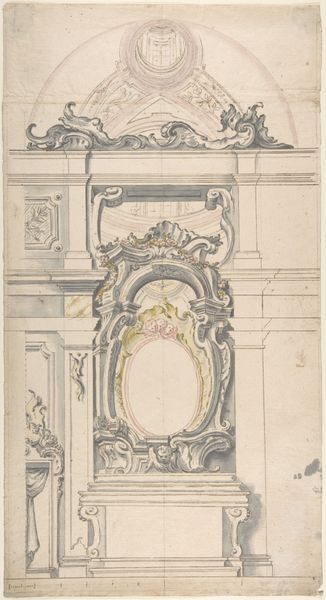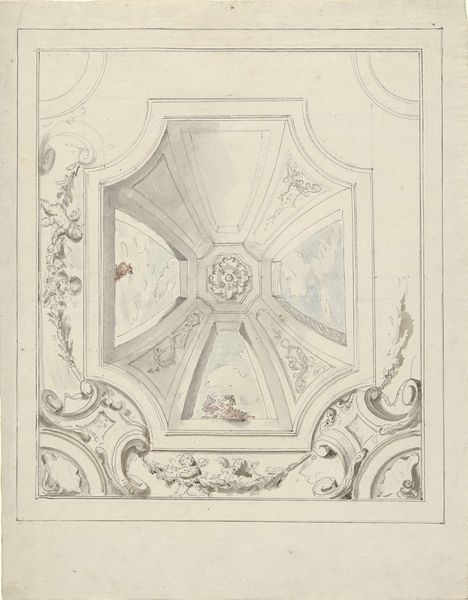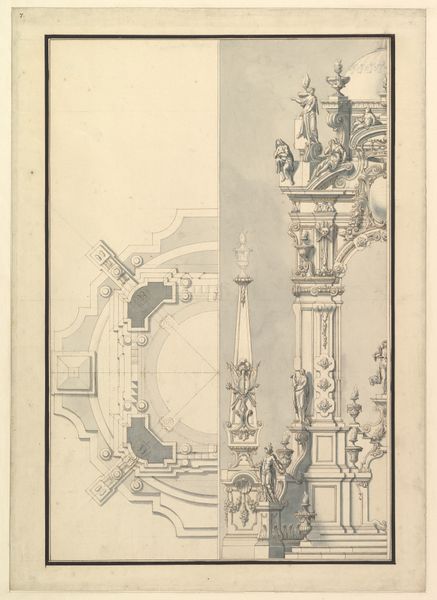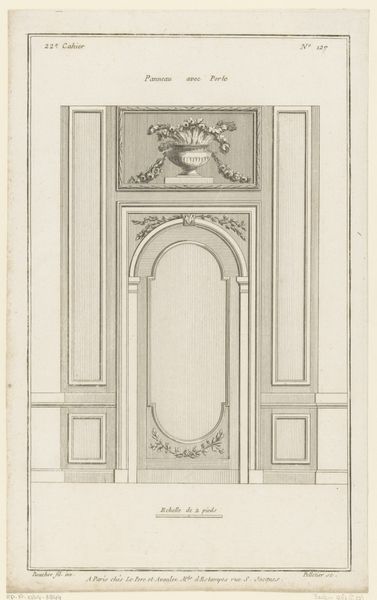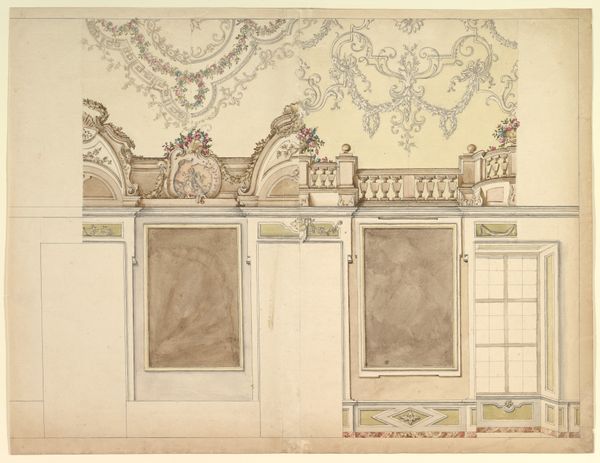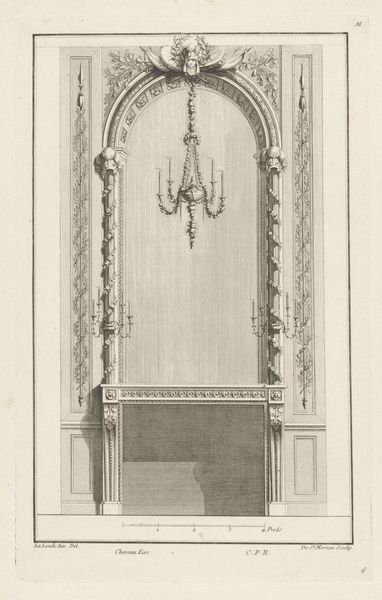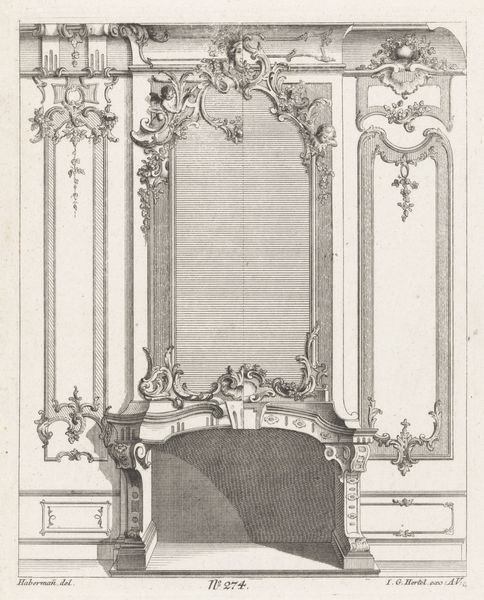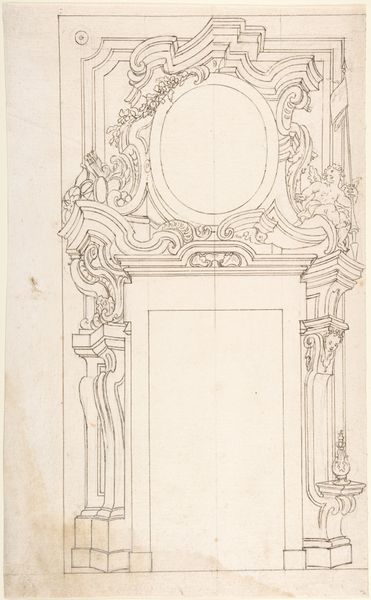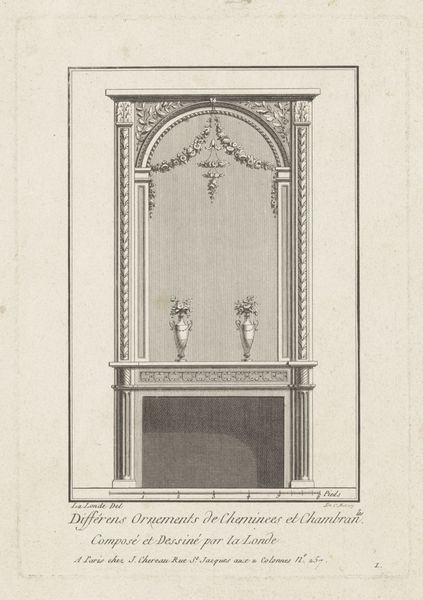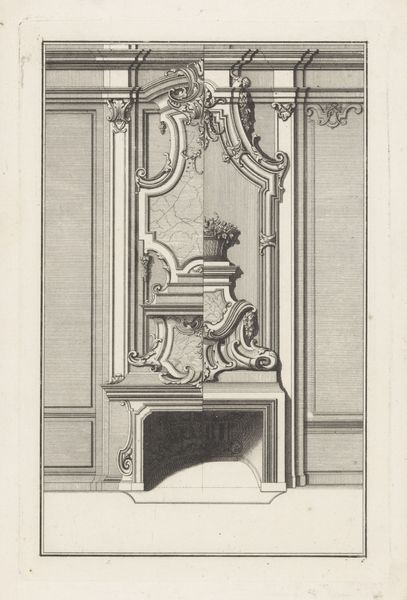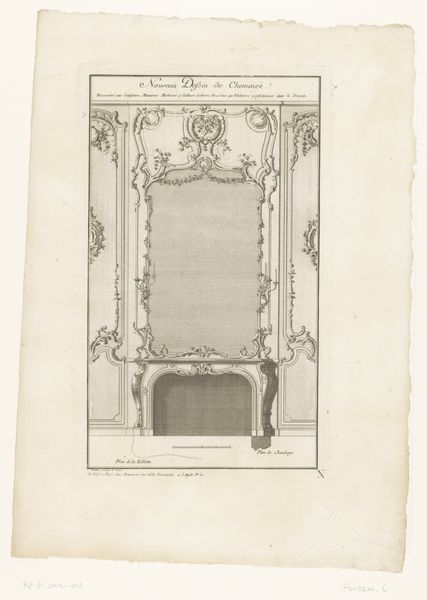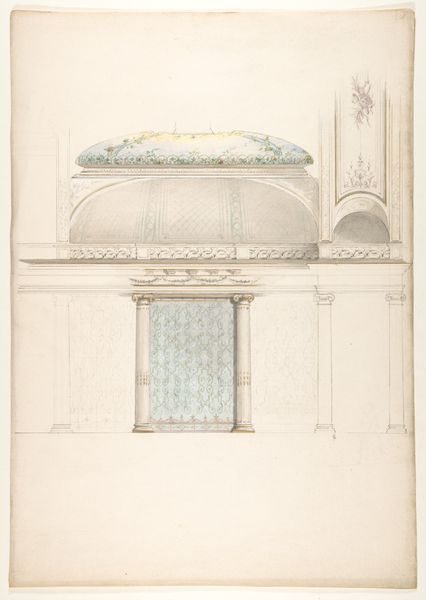
Ontwerp voor een plafondschildering met doorbroken gewelf met uitzicht naar de lucht 1715 - 1798
0:00
0:00
drawing, paper, fresco, watercolor
#
drawing
#
aged paper
#
toned paper
#
light pencil work
#
quirky sketch
#
allegory
#
baroque
#
paper
#
fresco
#
personal sketchbook
#
watercolor
#
sketchbook drawing
#
watercolour bleed
#
watercolour illustration
#
academic-art
#
sketchbook art
#
watercolor
Dimensions: height 377 mm, width 495 mm
Copyright: Rijks Museum: Open Domain
Dionys van Nijmegen made this design for a ceiling painting with watercolor and pen in the 18th century. It encapsulates the Baroque illusionistic ceiling painting that was very popular across Europe at the time. Ceiling paintings of this kind became popular with the rise of powerful autocratic rulers who wanted to give the impression of their palaces as open to the heavens. They can be read as the symbolic representation of the ruler's power made manifest in the architecture. The function of art here is to transform the viewers' perception of space, making them feel as if they were in the presence of something beyond the physical world. To understand these images, it's useful to consider the architectural and political history of the time. We can look at treatises, architectural plans, and political documents to better understand what was expected of art and artists, and what social function they served. This makes us realize that art is never produced in a vacuum and that even seemingly innocuous images like these are embedded in the structures of power.
Comments
No comments
Be the first to comment and join the conversation on the ultimate creative platform.
